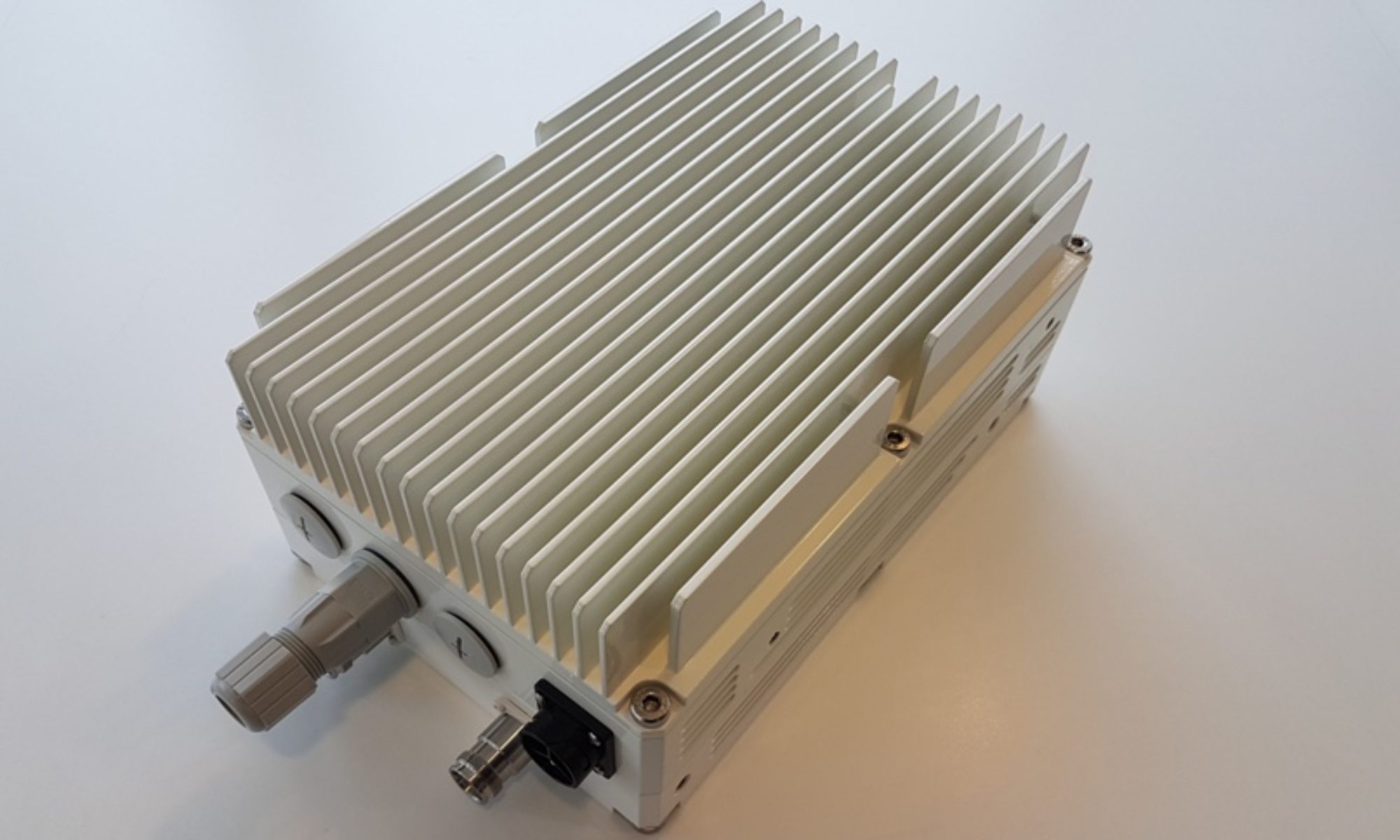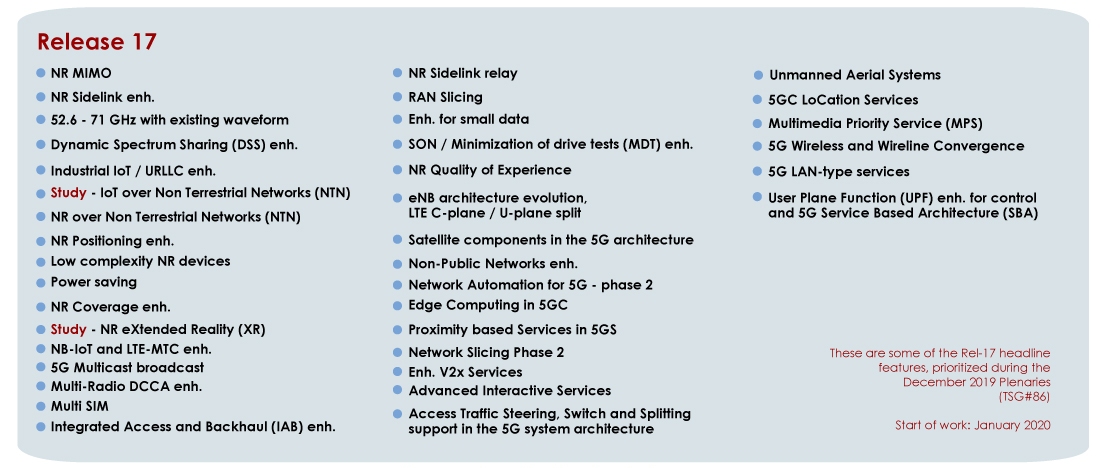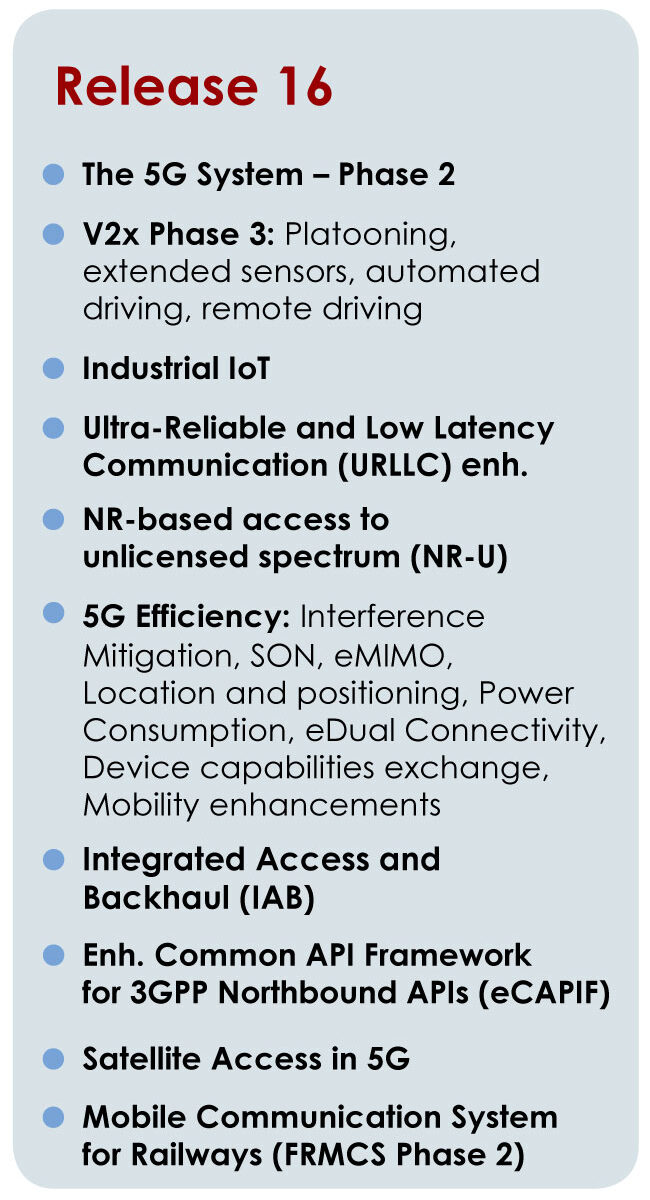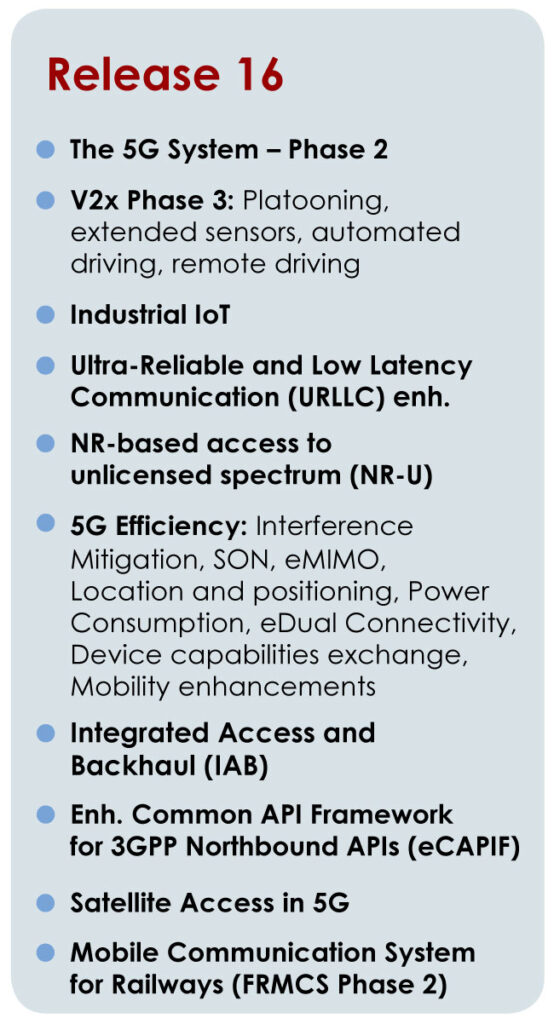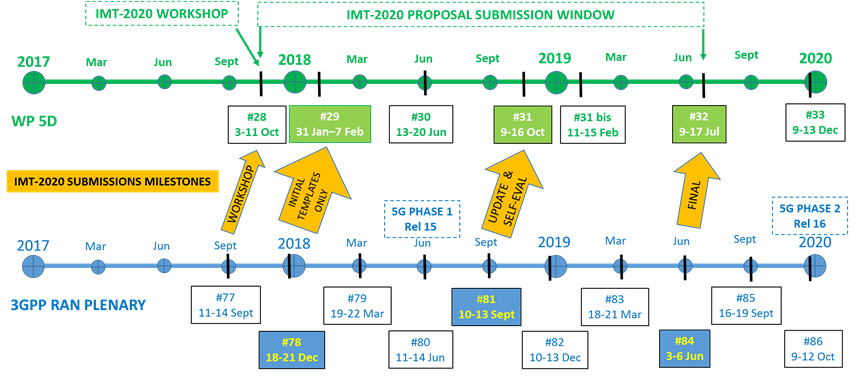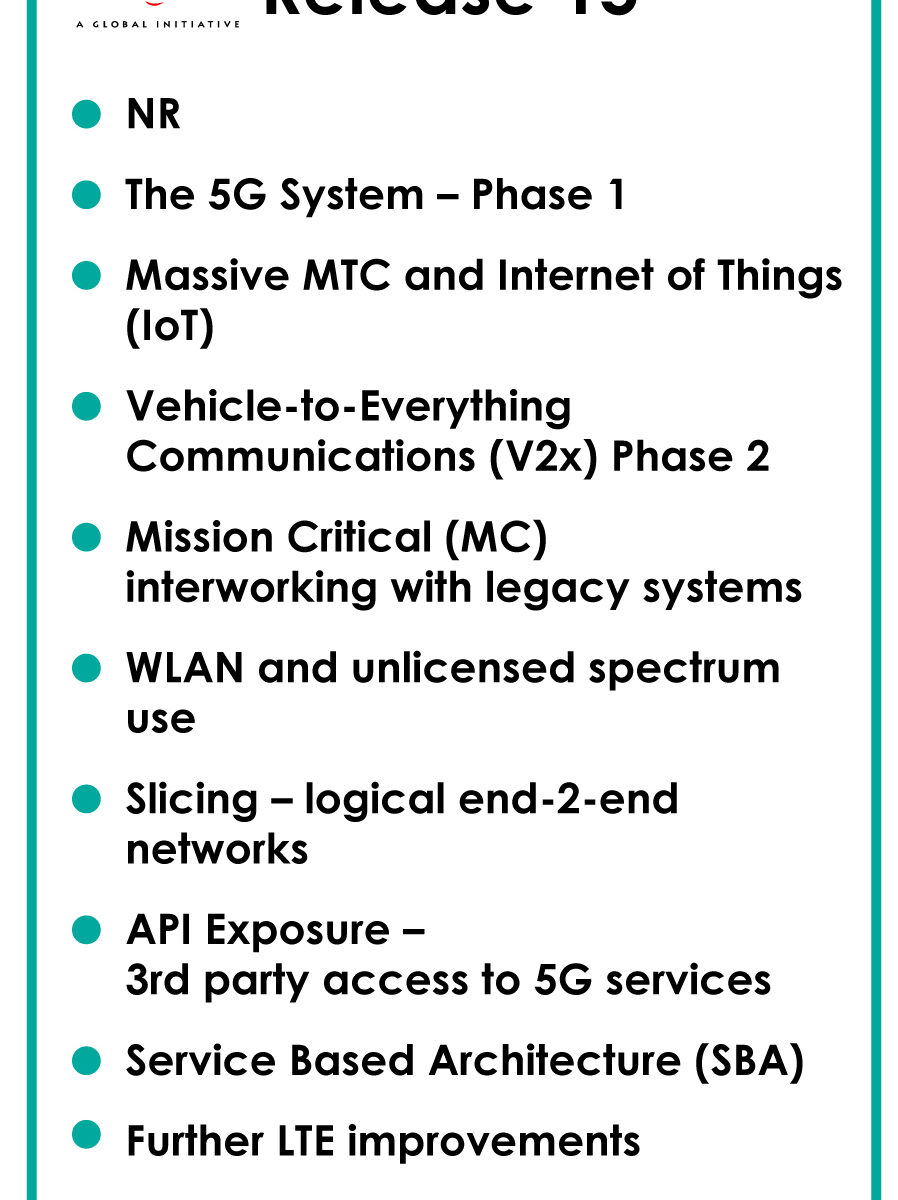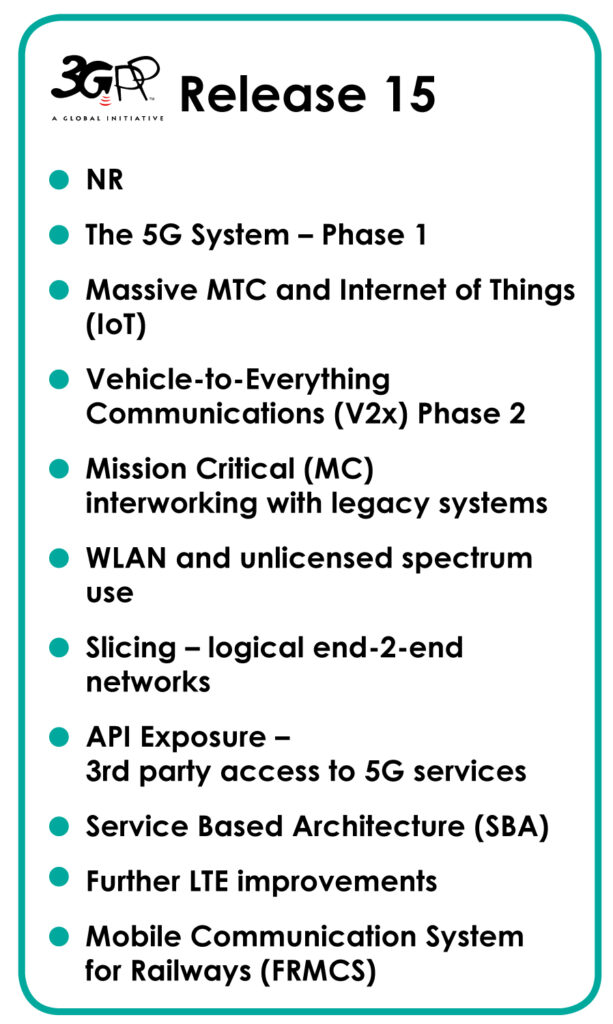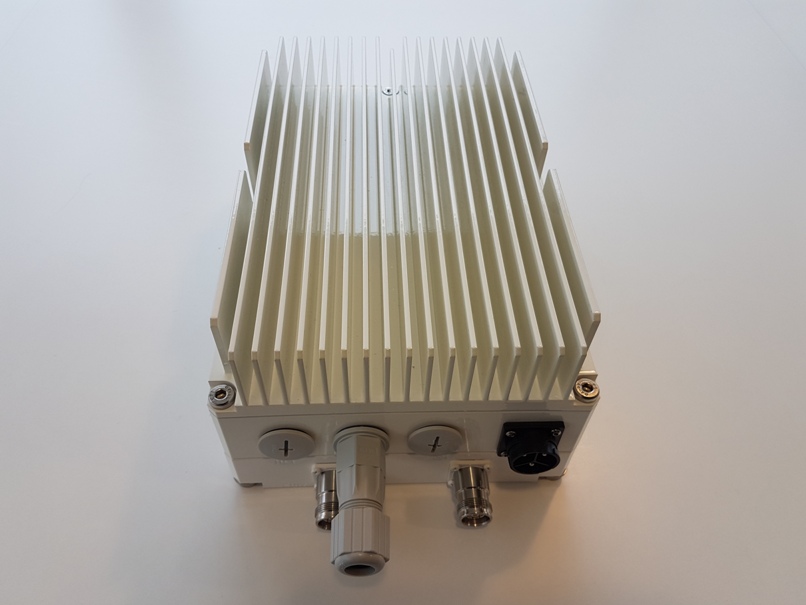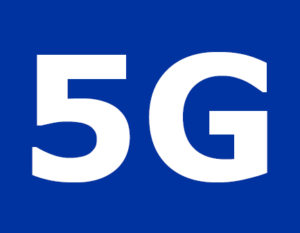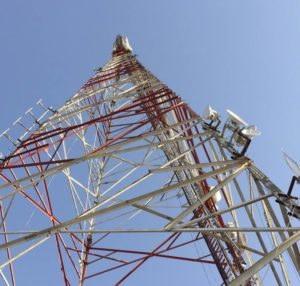Further 5G system enhancements are set to follow in Release 17, scheduled for delivery in 2021. R17 defines “Strong Radio Evolution”.
3GPP Release 17 Summary
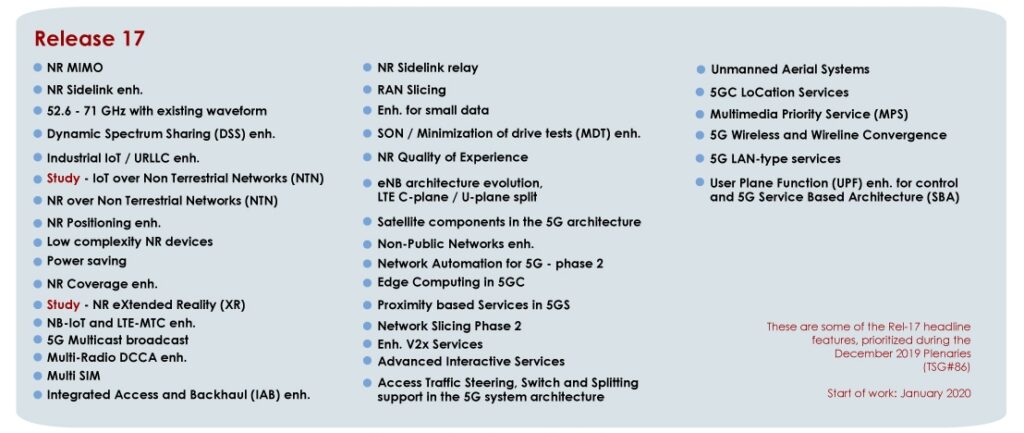
5G Release 17 Technology:
For Release-17 work in RAN1, RAN2, and RAN3: defines physical layer, radio protocol and radio architecture enhancements. The physical layer work in RAN1 will start at the beginning of next year, whilst radio protocol and architecture work in RAN2 and RAN3, respectively, will start in the 2nd quarter.
Physical layer enhancements (RAN1)
RAN1 will start working on several features that continue to be important for overall efficiency and performance of 5G NR: MIMO, Spectrum Sharing enhancements, UE Power Saving and Coverage Enhancements. RAN1 will also undertake the necessary study and specification work to enhance the physical layer to support frequency bands beyond 52.6GHz, all the way up until 71 GHz. The summary figure below shows the Release-17 content for RAN1 with the planned RAN1 time allocations (TU) in each quarter.
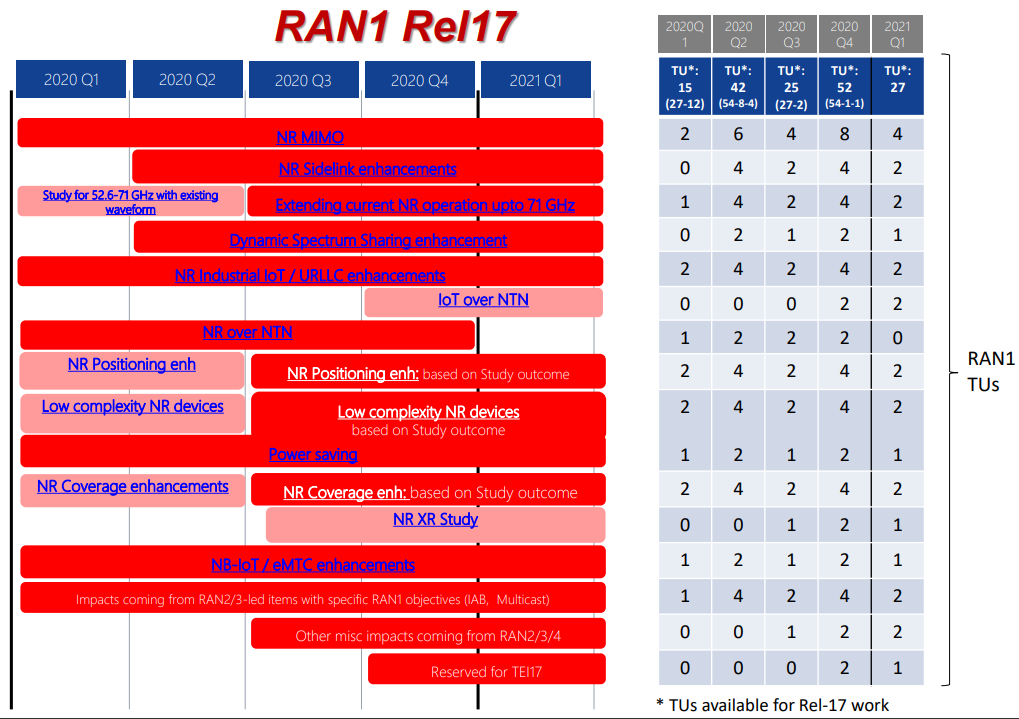
Radio protocol enhancements (RAN2)
In RAN2, the work starts in the second quarter of 2020. The necessary protocol enhancements for the newly added physical layer driven features will be added. The summary figure below shows the Release-17 content for RAN2 with the planned RAN2 time allocations (TU) in each quarter – note that these allocations may be revised at RAN#87 in March.
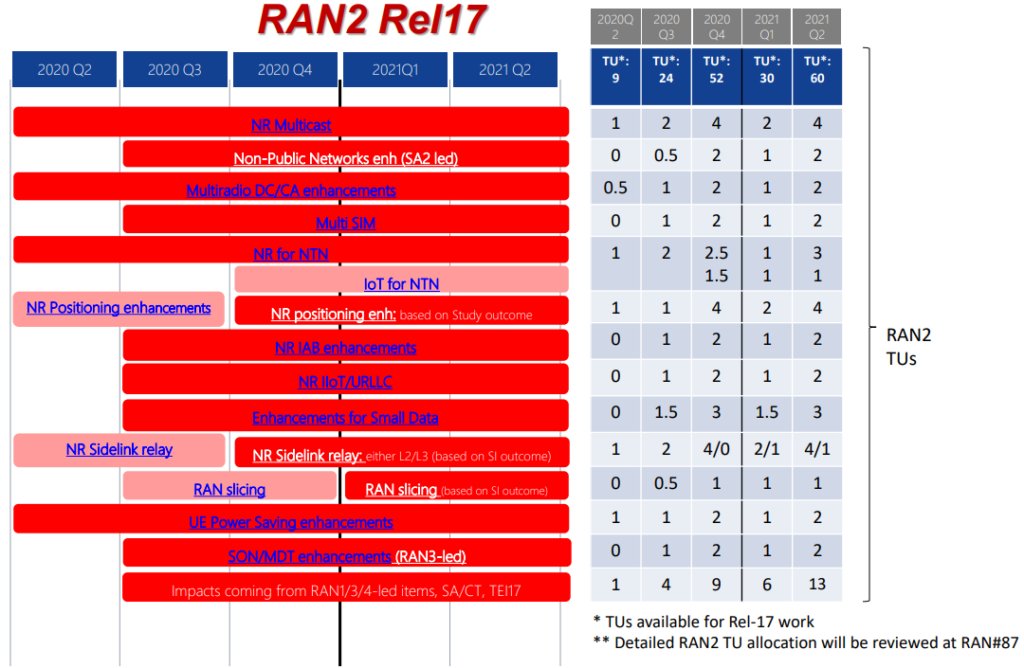
Radio architecture enhancements (RAN3)
In RAN3, Release 17 will also start in the 2nd quarter of 2020. Architecture support will be added to all necessary RAN1- and RAN2-led features. The summary figure below shows the Release-17 content for RAN3 with the planned RAN3 time allocations (TU) in each quarter.
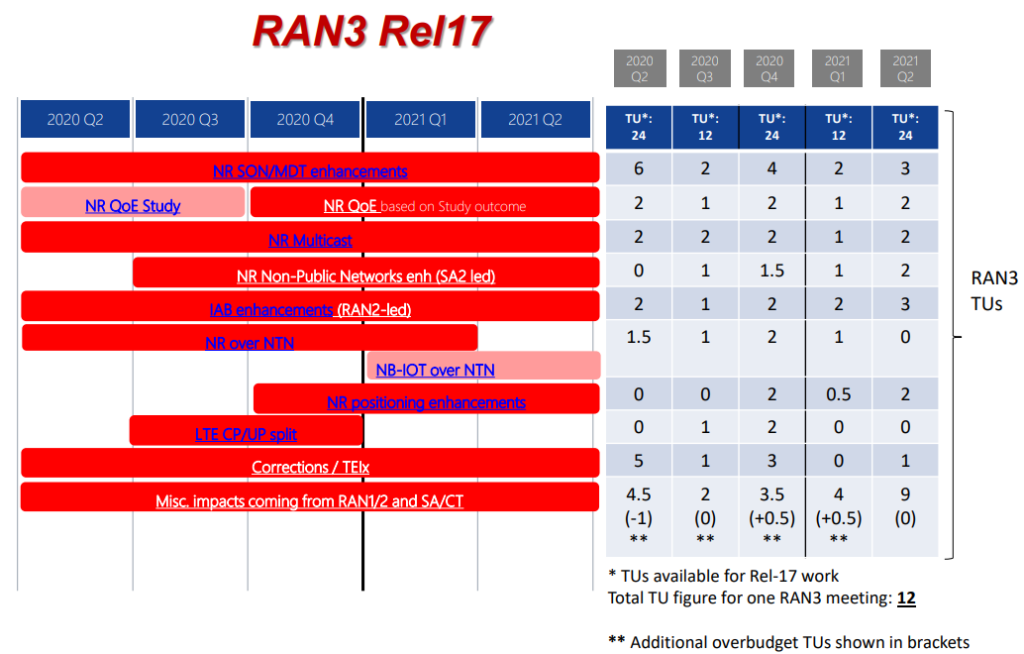
RAN3 will also address the QoE needs of 5G NR, initially starting with a study to understand how different the QoE function would need to be compared to what was specified for LTE.
The radio architecture of 5G NR is substantially more versatile than LTE through the split of gNB: Control- and Userplane split, as well as the split of Centralized Unit and Distributed Unit. RAN3 will now add support for CP-UP split to LTE to so that LTE networks can also take advantage of some of the advanced radio architecture functions of 5G.
3GPP R17 Summary
Release 17 is perhaps the most versatile release in 3GPP history in terms of content. Still, the scope of each feature was carefully crafted so that the planned timelines can be met despite the large number of new features. As RAN Chairman I have the utmost confidence that the Working Groups will be able to deliver the specifications for all the planned functionality within the designated timeline.
5G Release 17 standards work
5G Release 17 is considered “Work in Progress” for definition.
July 3, 2020 Update:
Discussions at TSG#88-e Plenaries identified that the Rel-17 dates are at risk of being delayed. This is due to switch from physical meetings to e-meetings. In SP-200606, the Work Plan manager noted that both SA2 for Stage 2 work (SP-200536) and TSG RAN (RP-201257) had warned that Rel-17 dates will have to be shifted. This will be further discussed in Sept 2020, during TSG#89-e.
At TSG#87e (March, 2020) the following Rel-17 timeline was agreed:
Rel-17 Stage 3 freeze September 2021
Rel-17 ASN.1 and OpenAPI specification freeze: December 2021
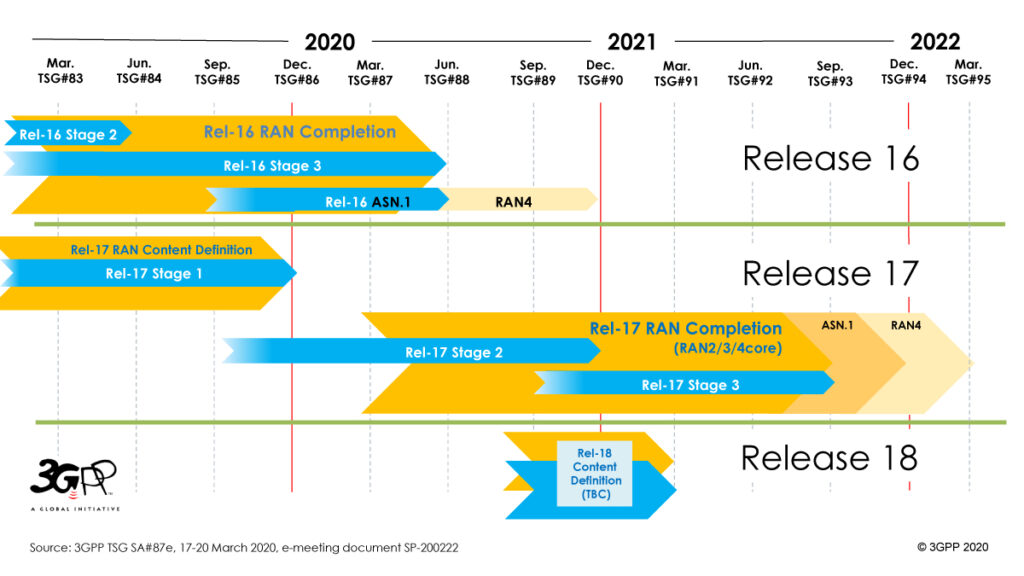
December 2019 Update:
At the December Plenaries, TSG RAN#86 meeting had outlined its ambitious schedule in the ‘Release 17 package for RAN’ presentation, which contains slides on the time to be spent (Time Units) on RAN features for Rel-17. In the light of the latest decision – In March – Here are the 3GPP RAN milestones as a consequence of the cancellation of WG and TSG face-to-face meetings.
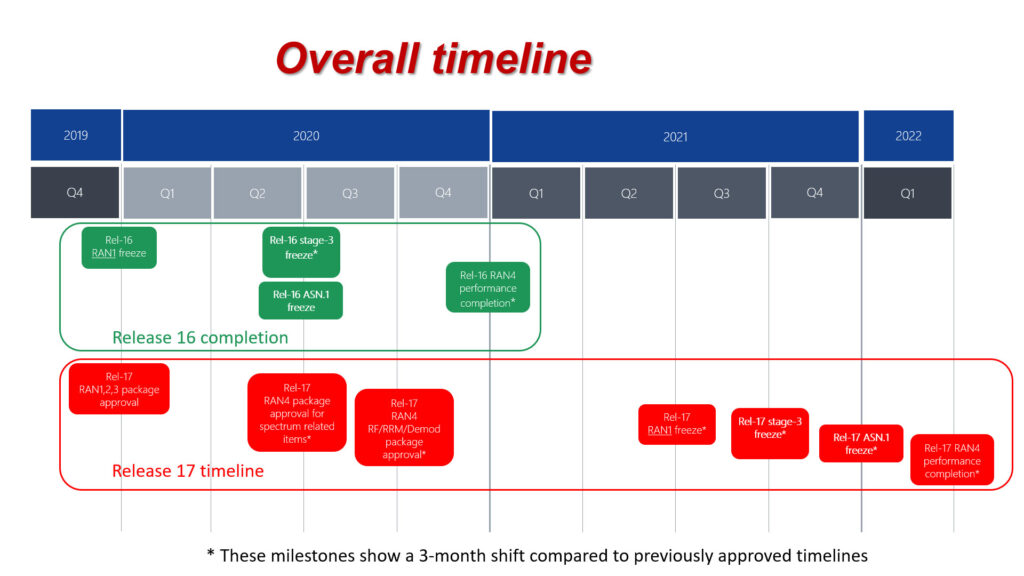
5G-NR Radios supporting Release 17
We offer a full range of Base Station gNodeB radios supporting 5G-NR with 5G-SA and 5G-NSA modes, with versions operating in all the defined 5G bands
Please note, content including diagrams is (C) 3GPP
For Further Information
Please Contact Us
